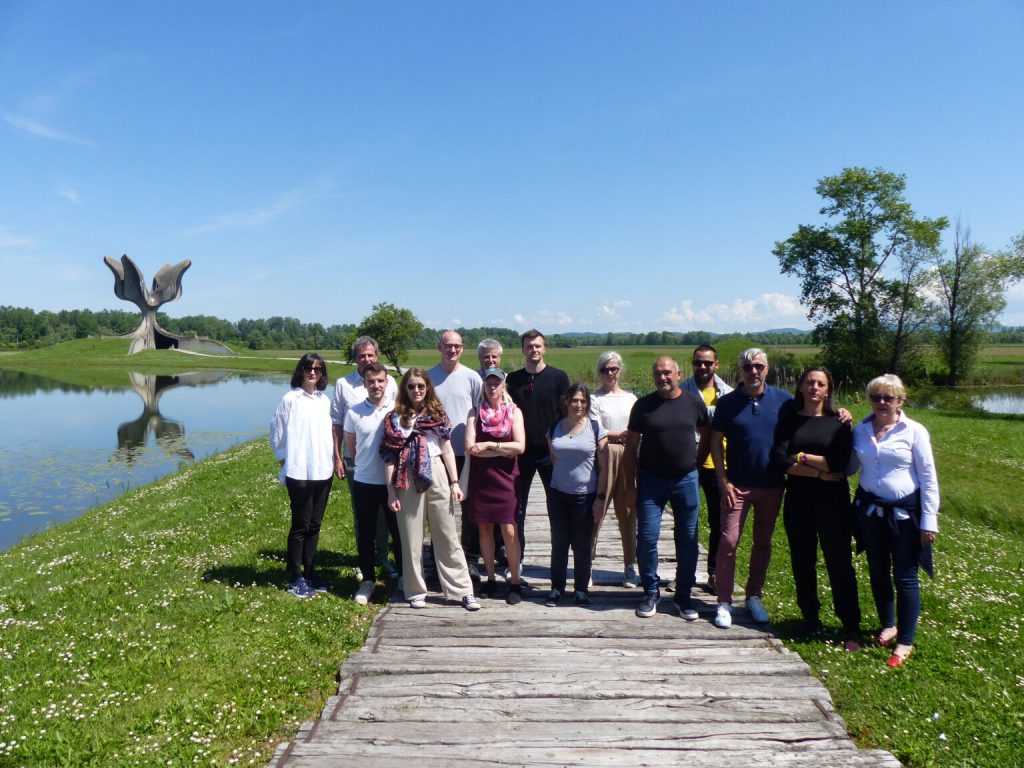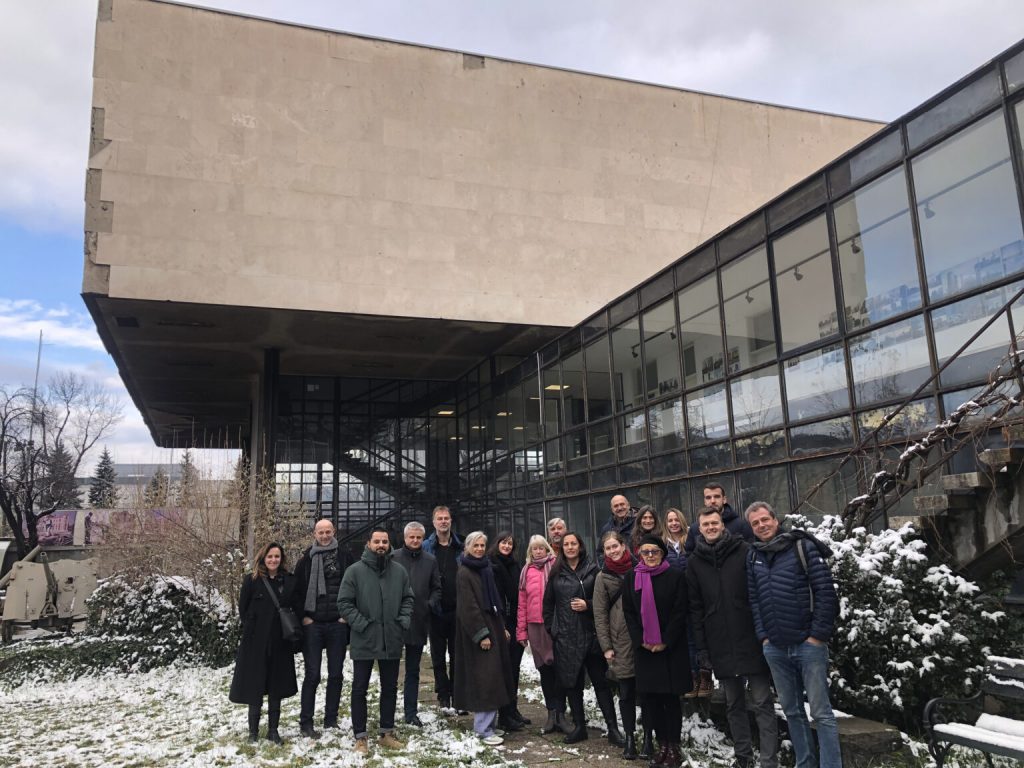In Sarajevo, he is a legend: Vladimir Perić “Valter”, a leader of the Partisans fighting against Nazi occupation during World War Two, and who died on the day Sarajevo was liberated, on 6 April 1945, killed by a grenade thrown by a German soldier. He was proclaimed People’s Hero in Socialist Yugoslavia in 1953, but became particularly known through the movie “Valter brani Sarajevo” (Walter defends Sarajevo) made in 1972.
The movie describes how the German occupiers desperately (and in vain) try to identify and arrest the Partisan leader who is only known under the alias of “Valter”; they create a fake Valter to infiltrate the underground, and for a long time even the spectators do not know who the “real” Valter is. Legendary is the final scene: Two German officers are walking on the heights above Sarajevo, one is about to leave the town and says to the other, that now, finally, after so many years, he knows who Walter is. The other reacts: “Sie wissen wer Walter ist? Sagen Sie mir sofort seinen Namen!” (You know who Walter is? Tell me his name right now!) The other answers: “Ich werde ihn Ihnen zeigen.” (I will show him to you). The camera pans on the panorama of the city of Sarajevo. “Sehen Sie diese Stadt? Das ist Walter.” (Do you see this city? This is Walter.) Through this film, Valter became much more than an individual partisan hero: a symbol for collective resistance, for people’s resistance, for everybody’s resistance.
Today, almost eighty years after his death, the historical figure of Vladimir Perić „Valter“ is less and less visible. Would people in Sarajevo be able to recognize Vladimir Perić Valter when looking at photos of him? Most certainly not. The case of „Walter“ seems to be symptomatic in regard to the little or superficial knowledge of the resistance in many European countries. Even if some names and faces seem familiar – in Germany for example Sophie Scholl, or in France Jean Moulin – what do we actually know about them and the history of resistance against Nazism and/or fascist occupation in our own society?
The ignorance is even bigger when it comes to the resistance in other European countries. Since Yugoslav history is particularly often neglected when talking about European remembrance, the choice of Walter for our title also underlines our aim to strengthen the place of the (post-) Yugoslav region in research and discussions about European history and memories. In our project also, Walter becomes a symbol – a symbol for all those men and women in different parts of Europe who refused to support or comply with Nazi Germany and their allies and who looked for different ways to articulate this refusal. A symbol, furthermore, of the many questions raised by Walter’s case and his popular perception after the war, which apply to other countries as well, for example: What was the significance of individuals in the resistance, what is the relationship between individual and collective resistance, and how “collective” was resistance anyway? Or also what functions the remembrance of resistance fulfilled after the war and how these functions have evolved?
All in all, the question „Wer ist Walter?“ illustrates our wish to contribute to the strengthening of a Trans-European knowledge and reflection on the history of resistance(s) to Nazism and occupation and on its memorialization(s) from 1945 to the present. By deepening and sharing knowledge and by questioning interpretations, we want to stimulate curiosity and find out more about the (known and unknown) Walters in different parts of Europe and the multi-layered history of their resistance.
Front photo credits: History Museum of Bosnia and Herzegovina.
Photo top left: Vladimir Perić „Valter“, unknown date. Vladimir Perić was born in 1919 in Prijepolje (Serbia) and died at the age of 26.
Photo top right: Vladimir Perić „Valter“ (on the right), in Vogošća (near Sarajevo) in February 1944, on his way to a meeting of the Communist Party of Yugoslavia (KPJ) in Jajce, in company of another Partisan, Zvonko Grbac. In 1943, Perić had become secretary of the Sarajevo committee of the KPJ and was in charge of the organisation of Partisan activities in and around Sarajevo.



